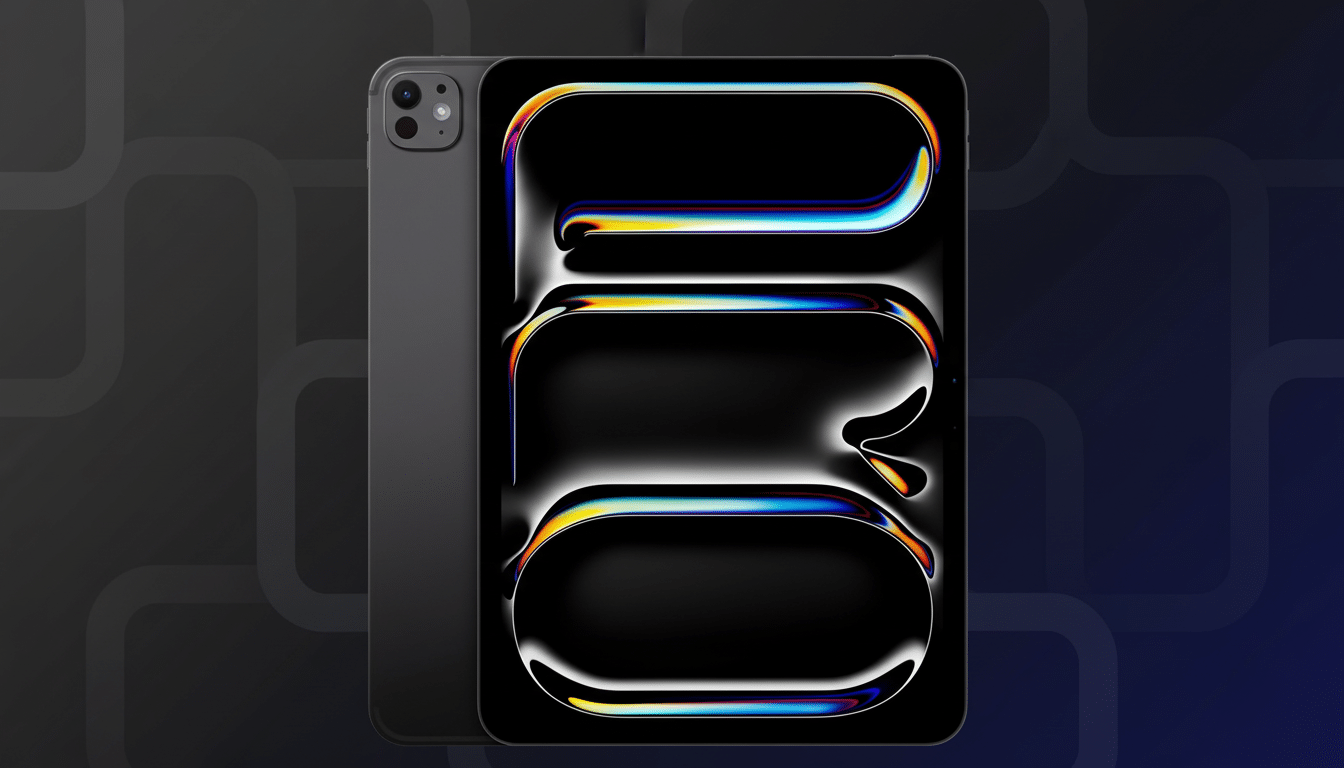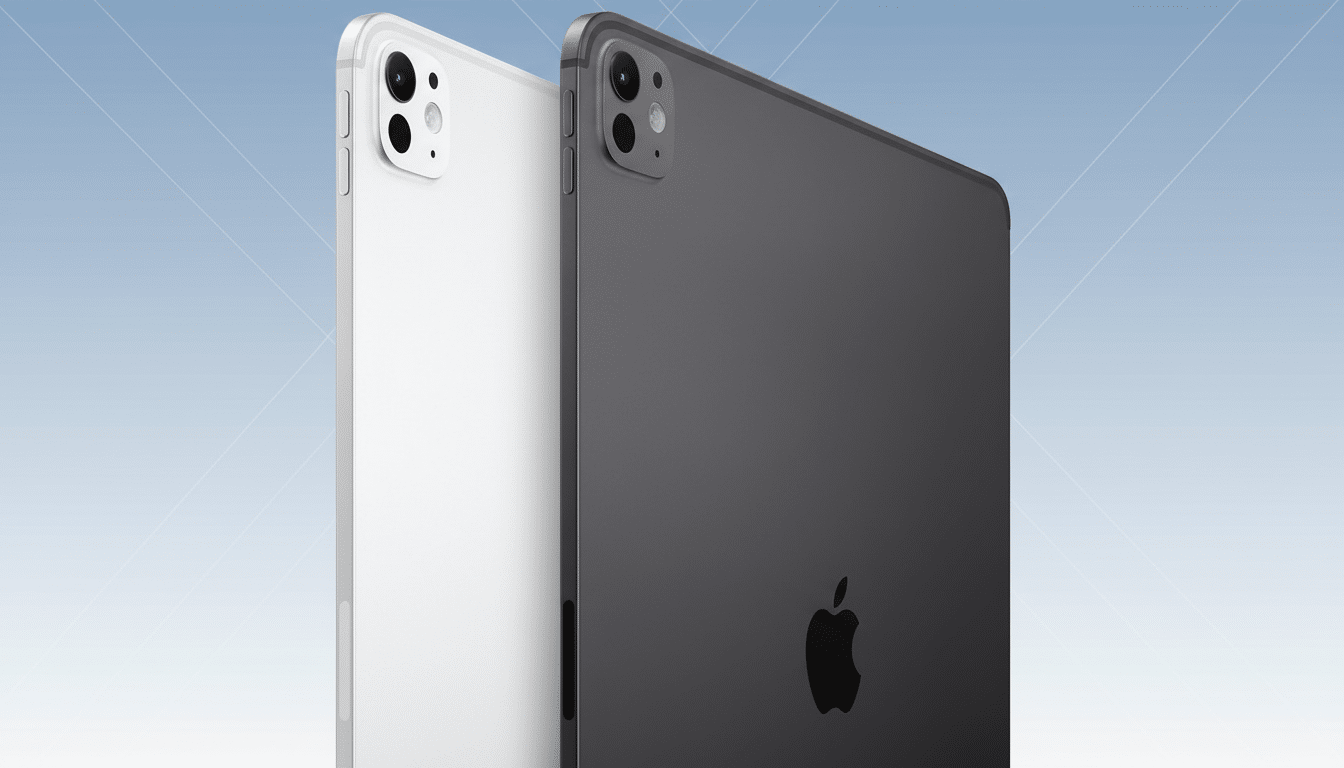Apple’s newest silicon generation is the M5, a 3nm system-on-a-chip that now anchors three of its flagship devices: the base 14‑inch MacBook Pro, the iPad Pro, and an updated Vision Pro. For the company, the pitch is simple: considerably faster on‑device AI, beefier graphics, and better power efficiency packed into relatively familiar hardware aimed at creators, developers, and early adopters of spatial computing.
The headline claims are aggressive. Apple says the M5’s peak GPU compute throughput for AI is over 4x the M4, along with 45% more ray‑tracing performance. A redesigned 10‑core CPU, with up to four performance cores and six efficiency cores, is said to be 15% faster generation over generation. Memory bandwidth gets a boost to 153 GB/s, and the new 16‑core Neural Engine gains performance that Apple says enables local, model‑side execution of those Apple efforts as well.

Inside the M5 architecture and on-device AI gains
Built on TSMC’s 3nm process, M5 features a next‑generation 10‑core GPU architecture with a dedicated neural accelerator inside each core. That architecture is designed to shift tensor‑heavy operations — diffusion, transformers, and real‑time generative effects — closer to GPU speed while remaining efficient on power. Apple cites apps like Draw Things and local large language models running without cloud calls as immediate beneficiaries, as do diffusion image models.
Bandwidth is as important as raw compute for AI, and 153 GB/s of unified memory makes token throughput and attention layers faster on modern models. MLCommons’ industry benchmarks typically show memory bottlenecks holding back on‑device inference; Apple’s strategy relies on unified memory to keep the CPU, GPU, and Neural Engine fed without shuttling data across slower buses.
MacBook Pro 14-inch with M5 brings faster AI and GPU
The base 14‑inch MacBook Pro upgrades to M5 and faster internal storage while retaining the same chassis, ports, and display. Apple’s guidance is: 3.5x the AI performance of an M4 model, 1.6x faster at graphics processing, and approximately 20% better multithreaded CPU throughput. Memory bandwidth increases from 120 GB/s to 153 GB/s at this tier — something we would expect to show up in tasks such as local LLM inference, Xcode builds with heavy linking, and GPU‑accelerated renders.
Configuration begins with a 10‑core CPU and 10‑core GPU, 16 GB of memory, and now goes up to 4 TB of storage without moving to Pro‑ or Max‑style chips. Battery life continues to be its calling card: Apple rates it for up to 24 hours depending on your workload. For video teams, look out for quicker background transcodes and speedier navigation in timelines in pro apps with access to Metal and the Neural Engine.
iPad Pro with M5 boosts creative and AI workflows
For the iPad, M5 is pitched as a jump for creative and AI‑based workflows. Apple quotes 3.5x the AI performance versus the previous M4 iPad Pro and up to 5.6x over the old‑school M1 generation. The cellular models get a new C1X modem, and another N1 chip manages Wi‑Fi, Bluetooth, and Thread for low‑power accessory connections.
The practical quality‑of‑life improvement is charging: Apple says the new iPad Pro should be able to hit 50% in half an hour with the right power delivery. As before, it comes in 11‑inch and 13‑inch sizes, with prices beginning at $999 and $1,299, respectively. Artists and illustrators will see better denoising across apps and Metal‑guided upscales, while photographers will notice finer selective adjustments — even on edits not yet applied.

Vision Pro with M5 gains comfort, clarity, and speed
Less dramatic but more significant for day‑to‑day comfort and clarity is Vision Pro’s update. The headset has an all‑new soft Dual Knit Band for improved weight distribution. M5 delivers faster app launches and web responsiveness, and a new generation of micro‑OLED panels that bring 10% more pixels than before and can refresh up to 120 Hz instead of 100 Hz.
Battery life inches up by about 30 minutes, to up to 2.5 hours of general use or three hours of video playback. Storage choices remain 256 GB, 512 GB, and 1 TB, as does the price — $3,500. For spatial media, a higher pixel density and refresh rate should help smooth motion and limit artifacting in fast scenes, which London‑based analysts at Display Supply Chain Consultants have identified as holding critical value for XR adoption.
Why this leap matters for real-world workflows
The connective tissue is on‑device intelligence. M5 puts the MacBook Pro and iPad Pro in a place to run larger local models at reasonably usable speeds, shave project turnarounds with faster GPU kernels, and keep privacy‑sensitive tasks off cloud servers. Developers using frameworks like Core ML or MLC‑based runtimes, and artists depending on Metal‑accelerated tools, will see less wait time and more real‑time responsiveness.
Even beyond the raw numbers, this coincides with general industry trends. IDC and Gartner predict that AI‑enabled PCs and tablets will drive upgrade cycles as people want personal local assistants, text‑to‑image options, and more intelligent media without being connected 24/7 to a network. In this context, the focus on unified memory bandwidth, a per‑core neural accelerator, and efficient ray tracing isn’t just spec‑sheet theater — it targets bottlenecks that crop up in practical production.
Pricing and key takeaways across Apple’s M5 lineup
The 14‑inch MacBook Pro with M5 begins at $1,599 for a system with a 10‑core CPU and 10‑core GPU, 16 GB of memory, and up to 4 TB storage options. The iPad Pro starts at $999 for 11 inches and $1,299 for 13 inches, includes faster charging, and folds in the C1X and N1 connectivity chips. Vision Pro remains at $3,500 while seeing a slight bump in battery life and display performance.
If you value on‑device AI, creativity accelerated by the GPU, or spatial media, it raises the performance floor in a meaningful way across Apple’s pro product lineup as it moves to all‑M5 generations.
The designs may look familiar, but the workloads they can carry — especially when there is no data center on call — are out of this world.

